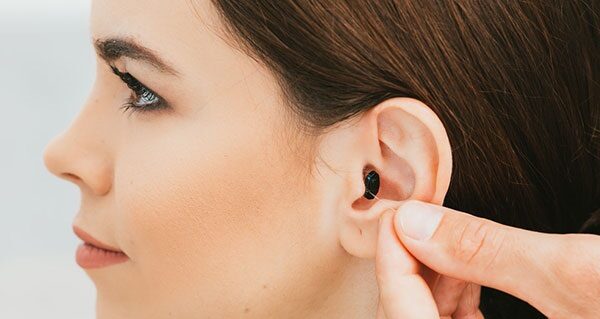Understanding the Fit of Hearing Aids: A Very Detailed Guide:
Hearing loss is the most prevalent affliction in the world, affecting millions. It interferes with communication quality, interpersonal relationships, and lifestyle in general. There is, however, a solution to this problem through hearing aids in handling hearing difficulties. Despite this fact, the efficacy of hearing aids depends mainly on fitting and fine-tuning. In this text, we discuss the process of hearing aid fitting, its significance, the steps involved, and guidelines for the best performance.
Importance of Proper Fitting of a Hearing Aid:
Hearing aid is not one size fits all. As the etiology and type of hearing loss differ, so do the individual needs for hearing aids. There are many reasons why proper fitting is important:
Comfort: A hearing aid should feel comfortable. Ill-fitting devices may cause irritation, discomfort, and sometimes pain that can reduce usage.
Quality of Sound:
A proper fitting maximizes the amplification of sound, clear, and without distortion.
Maximizing the Potential Benefit:
Proper fitting of a hearing aid makes it more possible for the person to improve one’s speech understanding and overall ability to communicate hence improving the quality of life.
Prevention of Feedback:
Poorly fitted hearing aids cause annoying feedback noise, technically known as a high-pitched whistling of sound.
Proper Fit: Damage caused by a poor fit to the hearing aid should be avoided so that the device may last long.
Fitting Procedure for Hearing Aid:
The fitting procedure is often done step by step. These stages include:
1. Thorough Hearing Test
Before fitting the hearing aid, an audiologist should first carry out a thorough hearing test. This shall include:
Audiological Tests: A form of tests aimed at establishing the nature of hearing loss.
Medical History Interview: One has a review of the possible causes of hearing loss through a review of the individual’s health history.
2. Selecting an Appropriate Hearing Aid
The audiology professional will recommend the most appropriate type and style of hearing aid, based on the assessment made. This is done while considering several factors:
Degerness level: either mild, moderate, severe, or profound determines which type is needed.
Lifestyle and Needs: Those people who have the most active lifestyle might require more powerful devices that are also multi-functional.
3. First Fitting
Upon selection of a hearing aid, during the first fitting, the audiologist does the following;
Adjustment: The adjusting of the equipment to suit the shape and size of the ears and this usually happens with molds and with other digital methods of scanning.
Programming: The audiologist programs the hearing aid according to the individual’s audiogram, which represents the person’s ability to hear, to get optimum amplification.
4. Real-Ear Measurements
Real ear measurements could be made to make sure that just the right amount of amplification is provided by the hearing aid. This would involve:
Positioning a small microphone in the ear canal to measure the sound levels at the time when the audiologist is adjusting the hearing aid.
Compare measured levels to target levels set during the initial assessment.
5. Follow-up and Re-adjustment
Fitting of hearing aid is not a one-time process. The relevance of follow-up clinic visit:
Fine-tuning-Increased adjustments need to be made as users become accustomed to their devices along with changes in their hearing needs.
User Feedback-Creating change, as needed, through user experiences to achieve comfort and performance.
6. Education and Training
Significant portions of the fitting process entail educating the user on:
Hearing Aid Operation: How to operate the hearing aid, including controls and features, and how to care for it.
Listening Strategies: Counseling on strategies to enhance communication and overcome listening difficulties in a range of environments.
Challenges in Fitting:
The fitting process is designed to be simple, yet users will still face many challenges :
1. Acclimatization Period
Typical Patterns of Adjustment and Discomfort
Many users may have a period of adjustment to the increased intensity of sounds. This might include:
Heightened sensitivity to environmental noise: Initially, there may be a feeling of being bombarded by sounds that the ears haven’t been able to detect clearly in years or even ever.
Fullness in the ear: Some users initially experience fullness in the ear, which tends to resolve within several days to weeks.
2. Distress
A person will typically be uncomfortable with their hearing aids, even with proper fitting, due to the discomfort of having something in their ears. Common causes include
Wrong Size: The hearing aid mold can sometimes fail to fit perfectly, which would irritate it.
Type: Some types of hearing aids might be uncomfortable for some users.
3. Technical Problems
Hearing aid, like any other technology, does pose technical problems. Users are also expected to overcome some of the given issues.
Let’s begin with the first one- Battery Life: Users need to know how to take care of the battery for the right supply or how to replace the battery.
Connectivity Issues: This can sometimes occur with Bluetooth-enabled devices.
Consider these tips to enhance hearing aid benefits:
Even in quiet conditions, continuous use of a hearing aid may allow your brain to get accustomed to and use it better to hear.
Proper cleaning and servicing must be conducted for them to function at their best. It includes,
Daily Cleaning- Cleaning out earwax and debris, which can cause an obstruction.
Periodic Audiology Check-Up: Regular professional cleaning and checks by an audiologist help detect any possible disorders in the ear.

3. Keep Yourself Updated
Keeping abreast with the latest technologies and features enhances the overall user experience. Many of the new advanced hearing aids are now featuring the following:
Directional Microphones: Focus on sounds by diminishing unwanted background noise to improve clarity
Noise Reduction: Filters out much-unwanted background noise and lets the listener listen with great comfort.
